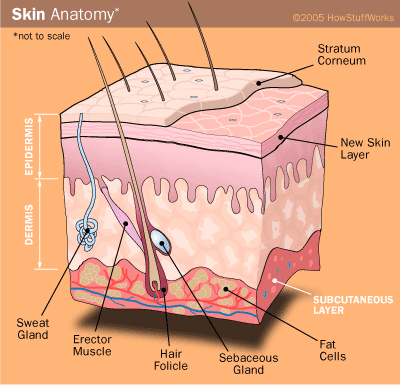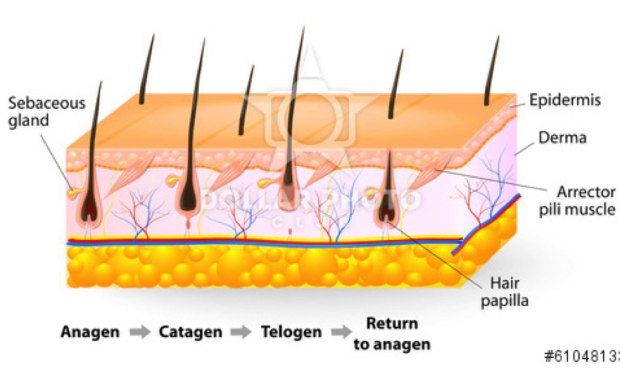The Hair Growth Cycle: Why Laser Hair Removal Requires Several Treatments
Laser hair removal, under normal circumstances, typically takes 4-8 treatments depending on what hair is being removed on which part of the body. Multiple treatments are necessary because of the hair growth cycle. It's also important to note that everyone's hair growth cycle is different.
Now, to fully understand how laser hair removal works, we need to talk about hair for a minute. What is it? How does it grow? And what is this "hair growth cycle" that was talked about in the title?
Hair Basics
Hair is composed of two structures: the follicle, and the shaft. The follicle is what is below the skin and the shaft is what is visible above it.

The follicle is a small segment of the epidermis (your surface skin) that travels down to the dermis (a deeper skin layer). This is important. Your skin is your body's protective wrapping. It's responsible for keeping the things that aren't you on the outside of your skin and the things that are you, on the inside. It keeps you safe from bacteria, and other critters that will make you sick. It's vitally important that punctures or tears to the skin are tended to, to keep bacteria and viruses out or the wound could become infected and the person sick.
The follicle is part of your top skin layer. Meaning, even though it's like a small indentation in the skin, it doesn't break through the skin. What it does is burrow slightly into the dermis layer. It's still part of the protective wrapping.
The dermis, on the other hand, can be thought of like a transitional layer. It's not really outside of your body, like the top of your skin, but it still offers a measure of protection. Pores, tiny capillary blood vessels, nerve endings, and the other surface workhorses exist in the dermis. That's why it's important for the follicle to extend from the epidermis to the dermis. That way, the hair has a way to attach to nerve endings and to blood vessels. This feeds the hair with nutrients, via the blood, and allows the body to gather feedback from hair via the nerves that attach to the follicle.
The part of the hair we see is called the "shaft". The shaft is formed in the follicle and grows out of it.
The Hair Cycle
When we shave, we trim off the exposed part of the shaft. What remains is the part of the shaft that has grown but is still beneath the surface as well as the follicle, which includes the segment all the way down to the round "bulb" at the bottom.
What the laser does during laser hair removal treatment is to "short out" the bulb in the follicle so that it won't produce the shaft anymore.
If this were the end of it, one laser hair treatment would be all that you would need to get rid of unwanted hair. But there's a catch.
There's always a catch.
In this case, the catch is the hair growth cycle.
Simply put, the hair growth cycle explains that not all hair grows at the same time. To permanently remove all of the hair, multiple treatments are needed to disable all of the hair follicles.

Laser hair treatments are typically scheduled 4-6 weeks apart. This is so that hair that's in the catagen phase (seen above) can be disabled. Repeated treatments disable hair that grows at different times.
For a visual demonstration of the hair growth cycle, check out the video below.
This hair cycle means that it takes time for your hair to be at the point where it will be disabled by the laser during laser hair treatment. This is why laser hair removal requires multiple treatments.
To learn more about laser hair removal or to schedule your free consultation, please call us at (910) 791-7500.

